Today we’ll look at the last leg of the Uganda Water Project I’ve shared with you this week.
Yesterday we covered Phase Two. And that brings us to Phase Three…
As the project progressed, the contractor noted that, given the chosen well site, it would not be difficult to install a two-way pump and a pipeline system to create several additional access points throughout the village.
Fr. Joseph brought the idea to us, and we agreed that it was a great idea – if it was in budget. The contractor ran his numbers and provided us a quote in Uganda shillings for the equivalent of $4,865 dollars.
Fortunately (for this project), the US dollar strengthened materially against the Uganda shilling from the time we received the initial contract to the time of funding. In other words, our dollars were able to buy more shillings than we originally expected.
Because the contract was quoted in shillings, this effectively reduced the total cost of the project in dollars.
Thus, the additional cost didn’t put us too far over budget. We were able to raise the additional funds, and we wired the $4,865 to Bevar Forex Bureau on December 21st to kick off the third phase of the project.
As for the final phase of construction, here we can see one of the water tanks being positioned on a platform:
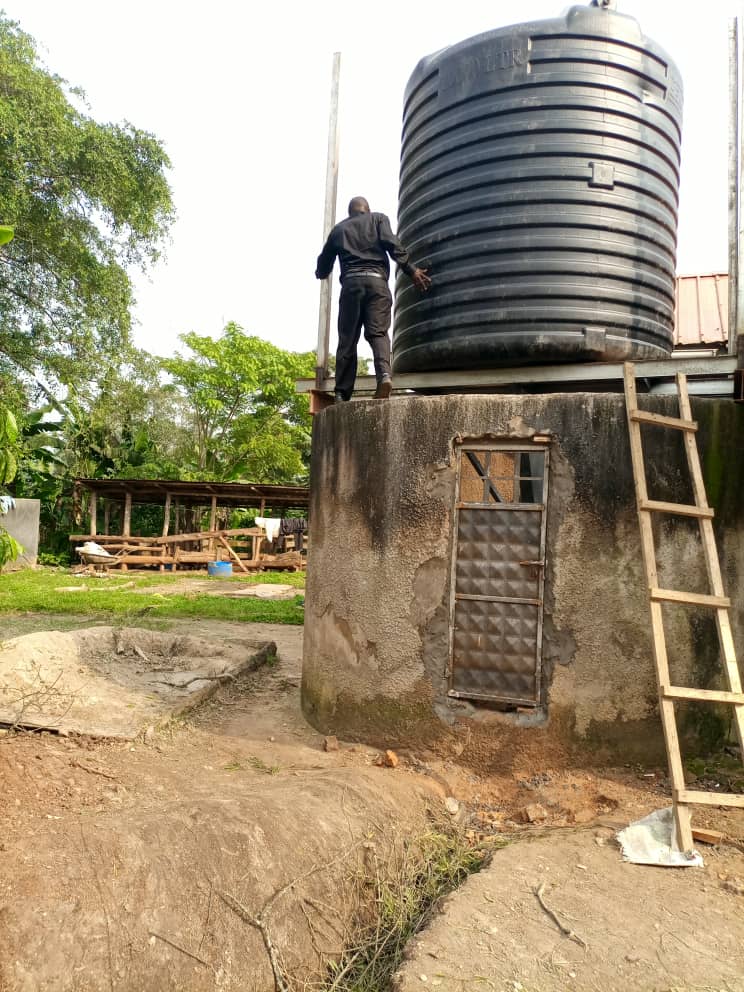
And at the bottom of this image we can see a trench. It pipes water from the borehole to the five access points in the village.
This next image gives us a better feel for it:
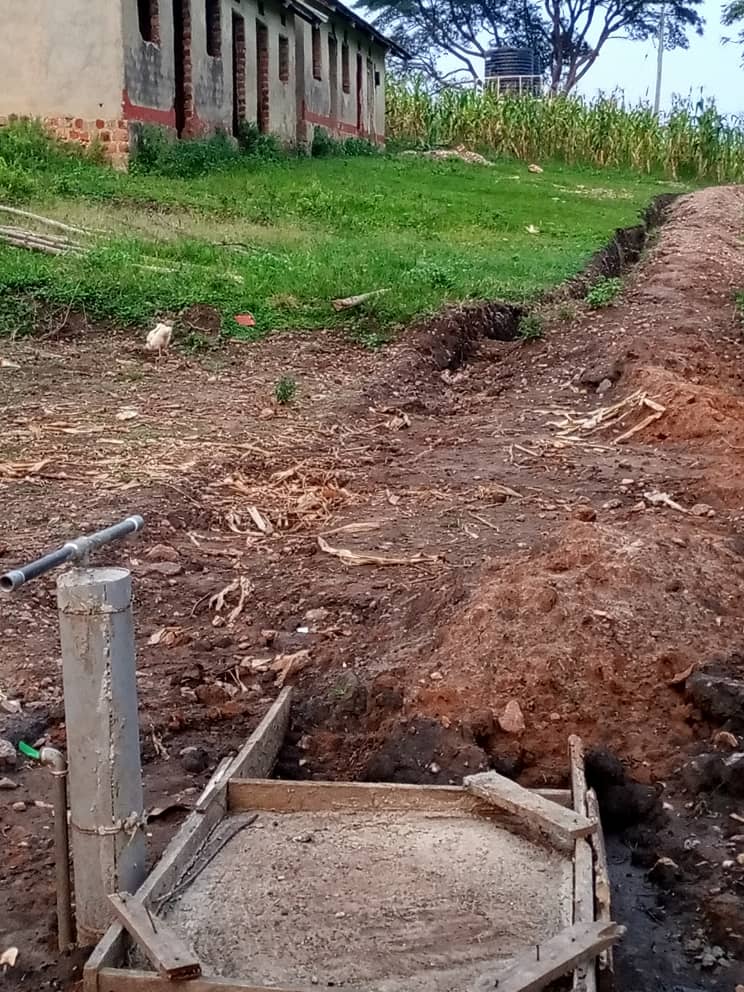
That’s the well in the bottom of the image. And we can see the trench running up to one of the access points about 150 meters away at the top of the image.
And the final piece of the puzzle is the solar installation. It will ensure that water can be constantly pumped from the borehole and piped to each access point for storage and collection.
Here’s the solar array being put together:
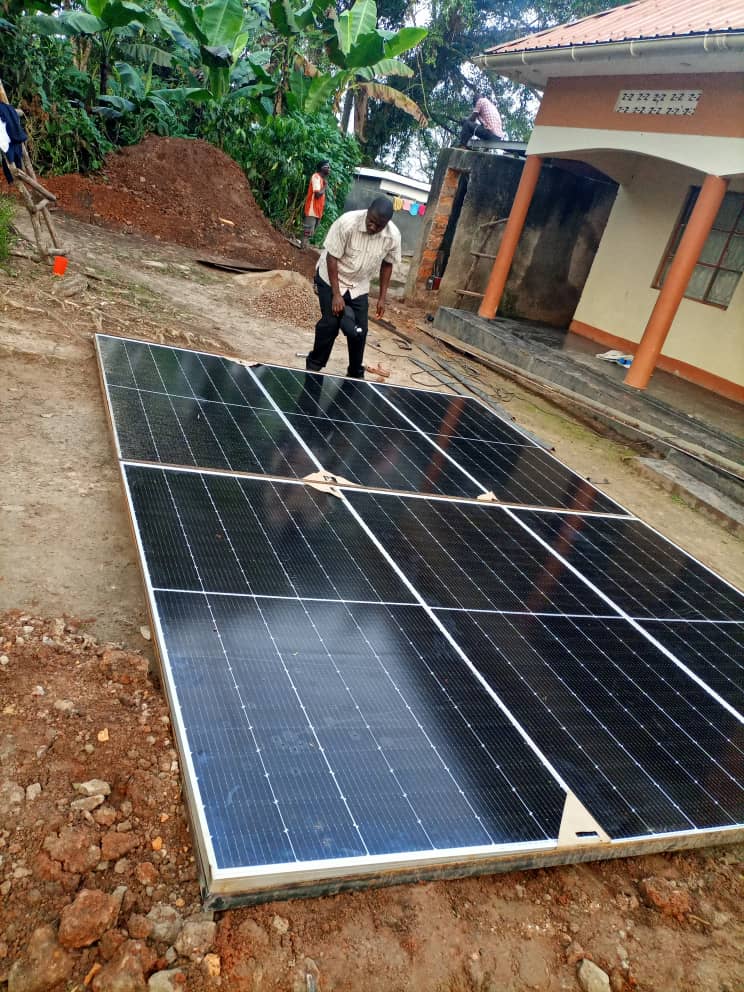
These images were taken as construction was ongoing. The last several images I’d like to share with you gives us a feel for how the project looks post-construction.
This next one shows the well after the site was cleaned up:
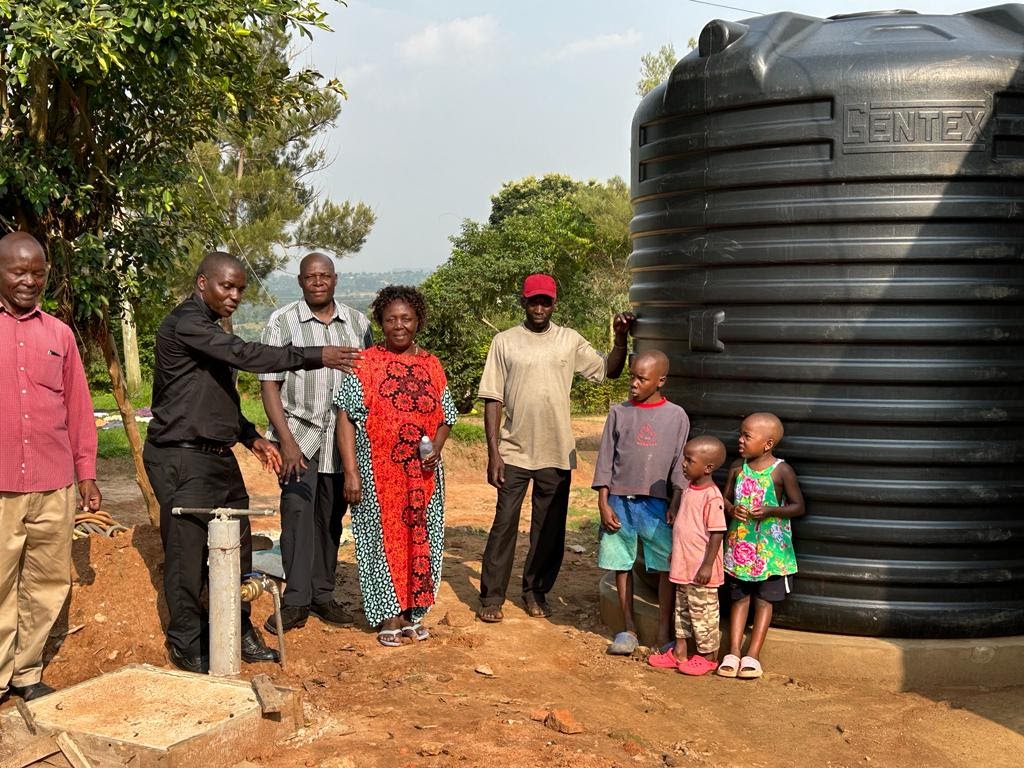
And finally let’s revisit that first platform we observed from the second phase of construction. Here it is with the water tanks installed:
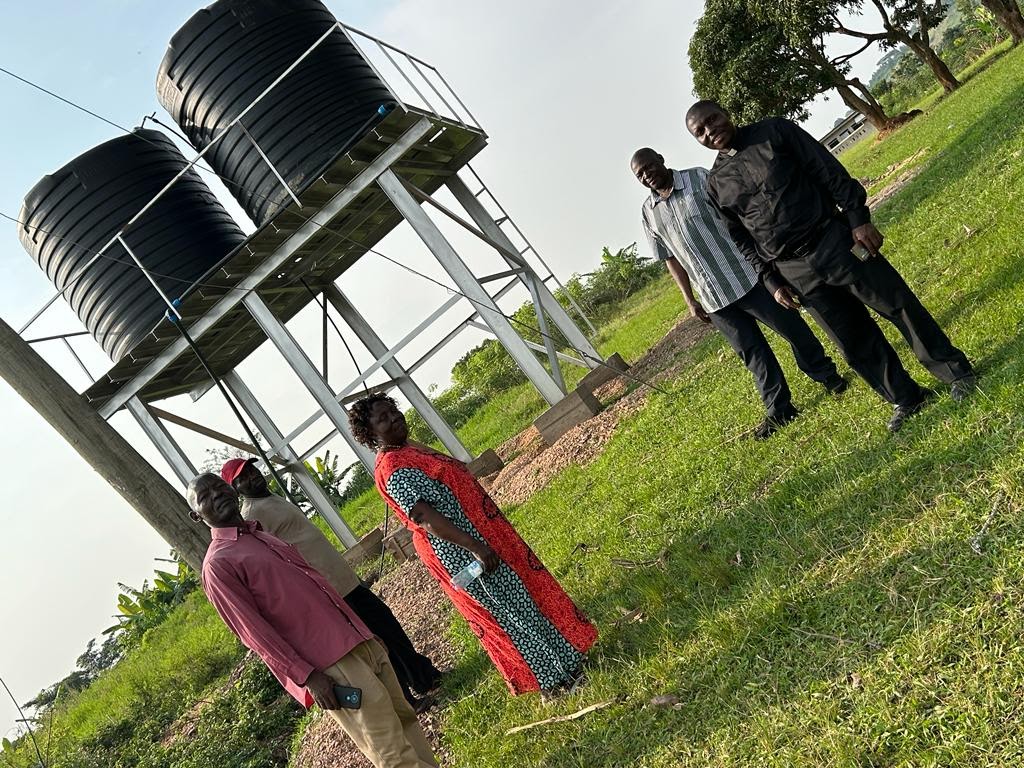
In closing, I’m blown away by the support we received as we took on this project. Here’s what I wrote in my status update to our donors:
You know, if we look out at nature, we can observe many different creatures who clearly serve a specific purpose. For example, earthworms fertilize the soil. Bees pollinate flowers and make honey. Bats help control insect populations.
It’s amazing to think about. But these creatures can only do what they were created to do. They can’t perform any other productive activities.
Then if we look at ourselves – the human race – we have no such limitations.
We can learn new skills, engage in new tasks… I don’t think it’s a stretch to say we can create at will. If we truly direct our mind and our energy towards something, odds are we’ll find a way to accomplish it.
My friends, we just came together to accomplish something wonderful.
In partnership with the Kireku-Bugolo Mwera Development Association, we built a robust water collection and distribution system in a rural village half-way across the world. We brought clean water to a place where people previously had to walk a mile or more each day to get it. There was a clear need.
Of course that begs the question – if there was such a clear need, why didn’t someone install a similar water distribution system in the village before now?
And the answer is because we were the only ones who were willing to take the time and pool our resources together to do so. I think that’s something to be quite proud of.
So thank you once again. It’s an honor and privilege to be associated with such generous people.
-Joe Withrow
P.S. You can follow our non-profit at https://f4hc.org/. Next week we’ll get back on the finance beat…